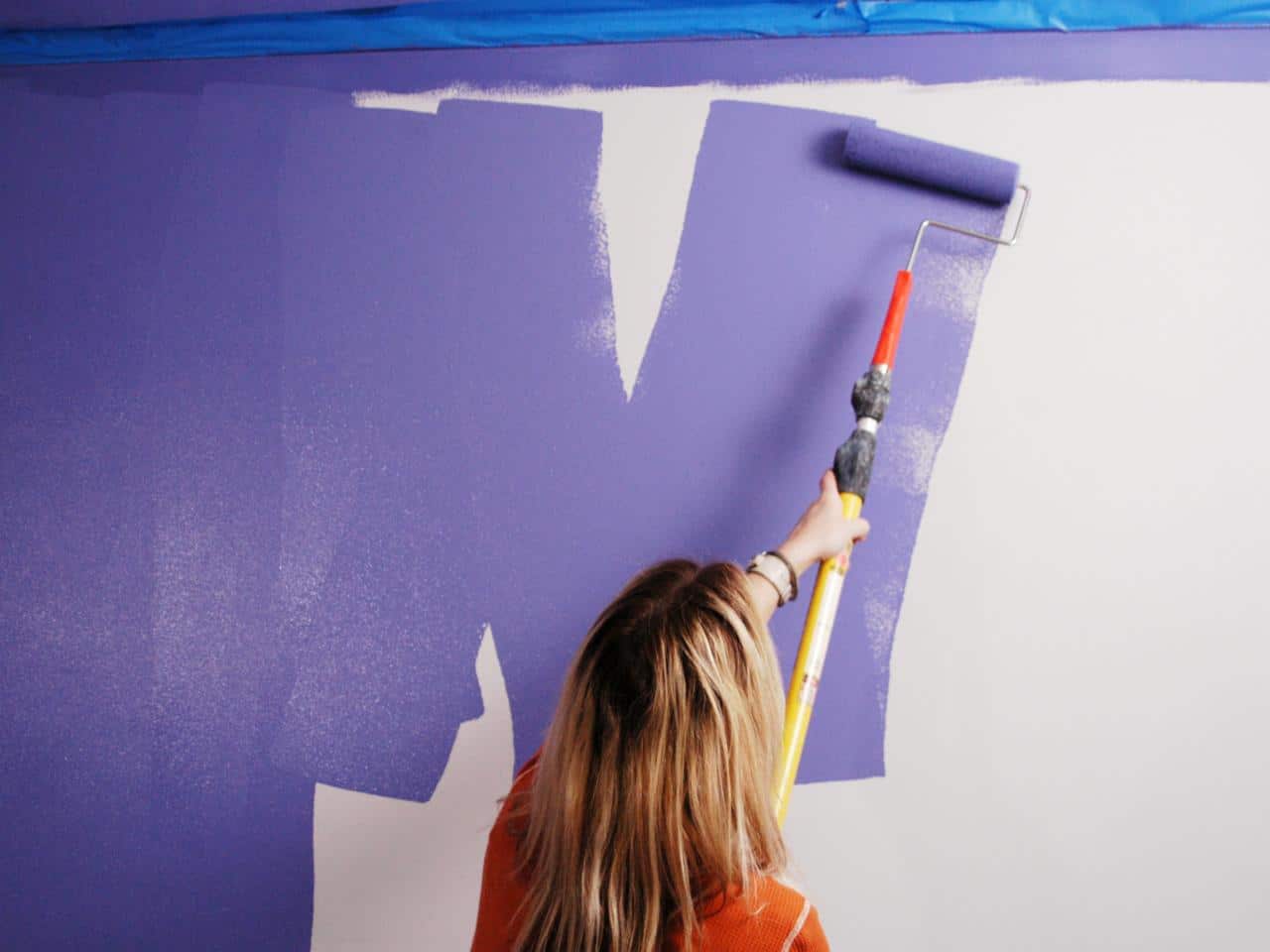Does Painting Interior House Add Value
Introduction
Does Painting Interior House Add Value: In the ever-changing world of real estate, where first impressions and aesthetics matter, the subject of whether painting the interior adds value remains relevant. A freshly painted interior can revitalize a home and attract buyers or tenants. Homeowners and investors consider interior painting a strategic investment to increase aesthetic and financial value.
Beyond the sheer visual appeal, the impact of painting interior on a property’s value is a nuanced consideration. It encompasses aspects that go beyond the surface, delving into psychological and practical dimensions. However, it’s essential to navigate this terrain with a discerning eye, as not all painting endeavors yield equal returns. Factors such as color choice, quality of workmanship, and alignment with contemporary trends can sway the outcome.
This investigation of interior home painting and its value-adding potential examines both tangible and intangible consequences. We use aesthetics and economics to dispel the myth that painting increases real estate value, from the psychological affects of color to the practical benefits of a well-maintained interior.

Does painting walls increase home value?
But will painting your house increase the value? Yes, it can absolutely affect your resale value! Online real estate giant, Zillow, has conducted paint color analyses like this one over the past few years to determine which exterior and interior paint colors add the most value to your home during resale.
Yes, painting walls can increase home value, but it’s important to approach it strategically. This can result in a quicker sale and potentially a higher selling price.
How much value does painting a room add?
Great for: Living rooms, bedrooms, exteriors
“Painting your living room a neutral color like gray, beige, or light brown can add up to $2,000 to your home’s value, which can be modernized with accents of white,” says Bailey Carson, home care expert at Angi.
The value added by painting a room can vary widely based on the room’s size, condition, and the quality of the paint job. Generally, a well-executed paint job in a room can offer a return on investment (ROI) of up to 1-2 times the cost of the paint and labor. However, the real value lies in the improved aesthetics and marketability of your home.
Is interior painting worth it?
Increase the Value of Your Home
It can also help sell a home that’s on the market faster, even over asking price.
Interior painting can be worth it for several reasons. Beyond potentially increasing your home’s value, it can enhance the overall ambiance of your living space. It’s a relatively cost-effective way to refresh and update your home’s appearance without major renovations. Painting allows you to express your personal style and create a more comfortable and inviting atmosphere. Additionally, a well-painted interior can positively affect your mood and well-being.
What color adds the most value to a home?
“Many homebuyers don’t want to spend extra money after closing on a new home, and neutral colors like white, light grey, taupe, beige, or even ‘greige’ (a grey-beige) that go with just about anything have the greatest overall appeal,” Beatrice de Jong, top LA realtor and Consumer Trends Expert at Opendoor, told RD.
Neutral colors like light gray, beige, or soft shades of white tend to add the most value to a home. Bold or highly personalized colors may limit your home’s appeal, potentially reducing its market value.
Does painting a room make a difference?
How to Use Paint to Change the Look and Feel of a Room | 5th …
With this in mind, with paint you can make any room in your home appear smaller, larger, change the shape of a space, create a focal point, or even hide features that you don’t want to be seen.
Yes, painting a room can make a significant difference in several ways, including:
Aesthetic Improvement:
One of the most immediate and noticeable changes when painting a room is the enhancement of its overall appearance. A fresh coat of paint can cover scuffs, marks, and imperfections on the walls, giving the room a clean and polished look. It can also transform a dull or dated space into a vibrant and visually appealing one.
Mood Enhancement:
The color of a room can influence your mood and emotions. Different colors evoke different feelings. For instance, cool colors like blue and green can create a calming atmosphere, while warm colors like red and yellow can add energy and vibrancy. Choosing the right color for a room can help set the desired mood and ambiance.
Perceived Space:
Paint can visually alter the perception of space. Light colors can make a room feel more open and spacious, while dark colors can create a cozy and intimate atmosphere. Strategic color choices can optimize the perception of space in small or awkwardly shaped rooms.
Personalization:
Painting allows you to personalize your living space according to your taste and style. You can choose colors and finishes that align with your preferences and create a space that feels uniquely yours.
Home Value:
Painting a room, especially if done professionally and with popular, neutral colors, can increase your home’s resale value. A well-maintained and freshly painted interior can make your home more appealing to potential buyers, potentially leading to a quicker sale and a higher selling price.
Protection:
Paint not only enhances the appearance of walls but also acts as a protective barrier. It helps shield walls from moisture, dirt, and wear and tear, extending the lifespan of the surfaces.
Maintenance:
Regularly repainting rooms can help identify and address issues like water damage or mold early, preventing more extensive and costly repairs down the road.
What adds value to a painting?
All About Value
Value is the skeleton upon which the painting is constructed, while the colors add local interest. Remember: Value contrast is placing the darkest values next to the lightest values. The human eye is immediately drawn to a light element against a dark element.
Several factors can contribute to the value of a painting:
Artist’s Reputation:
Paintings by renowned and well-established artists often have higher value. Artists with a strong reputation in the art world, a history of exhibitions, awards, and critical acclaim tend to command higher prices for their work.
Artistic Skill and Technique:
The level of technical skill and mastery demonstrated in a painting can significantly affect its value. Paintings that showcase exceptional craftsmanship, attention to detail, and innovative techniques are often more highly prized.
Uniqueness and Rarity:
Paintings that are one-of-a-kind or part of a limited series can be more valuable. Rare and unique works tend to attract collectors and investors who are willing to pay a premium for exclusivity.
Historical Significance:
Paintings that have historical importance, such as those associated with significant events, movements, or cultural shifts, can be highly valuable. Historical context can add depth and meaning to a work of art.
Provenance: The documented history of ownership, or provenance, can impact a painting’s value. A clear and reputable provenance can provide authenticity and traceability, which can increase confidence in the artwork’s value and legitimacy.
Condition and Preservation:
The physical condition of a painting is crucial. Well-preserved paintings in excellent condition tend to be more valuable than those with damage or deterioration. Proper conservation and care can help maintain or even enhance a painting’s value over time.
Market Demand:
Current market trends and demand for a particular artist, style, or genre can influence a painting’s value. If there is high demand for works by a specific artist or within a particular art movement, prices may rise accordingly.
Subject Matter and Composition:
The subject matter and composition of a painting can also play a role in its value. Certain themes, subjects, or compositions may be more sought after by collectors and, therefore, command higher prices.
Awards and Recognition:
Paintings that have received awards or recognition in reputable art competitions or exhibitions may have increased value due to their acknowledged quality.
Emotional or Cultural Significance:
Paintings that hold emotional or cultural significance to a particular group or community may be highly valued within that context, even if they are not widely recognized in the broader art market.
It’s important to note that the art market can be subjective, and value can fluctuate over time based on changing tastes, trends, and economic conditions. Additionally, expert appraisal and authentication are often necessary to accurately determine a painting’s value.
Why is painting a room so expensive?
The biggest cost is labor. Most of the painter’s time is spent preparing the surface so paint will adhere well and the job will last. Your biggest potential savings come from controlling or reducing how much time a professional painter has to spend on the cleaning, patching, sanding, caulking and painting.
The cost of painting a room can vary depending on several factors, which may include the size of the room, the quality of paint and materials used, labor costs, surface preparation requirements, and any special techniques or designs. Skilled labor and premium paint products can contribute to higher costs. Additionally, if there are issues like extensive wall damage or multiple coats of paint to be removed, it can increase the expense. While painting might seem expensive, it’s important to remember that a well-executed paint job can have a significant impact on your home’s aesthetics and value.
Why should I paint my interior?
Just as exterior paint is used to protect your home from weather, temperature, and external elements, interior paint is an effective way to protect walls, doors, and trim. Paint minimizes damage from moisture and can even help surfaces hold up longer from normal wear and tear.
Painting your interior can provide various benefits. It can refresh and update the look of your home, increase its market value, improve your living environment, and allow you to personalize your space according to your preferences. Painting is a relatively affordable and non-invasive way to enhance your home’s appearance and make it more appealing and comfortable for you and potential future buyers. It’s an investment that can yield both short-term satisfaction and long-term returns if done thoughtfully and skillfully.

Conclusion
In the realm of real estate where aesthetics and impressions hold significant sway, the question of whether painting the interior of a house adds value finds its answer in a delicate balance of perception, practicality, and market trends. While a fresh coat of paint can undeniably breathe new life into a living space and shape the overall ambiance, its impact on property value is a multifaceted consideration. The interplay of color psychology, the illusion of space, and the potential to align with contemporary tastes all contribute to the narrative of add value.
Ultimately, the decision to paint the interior of a house must be approached with a strategic mindset. A well-executed painting endeavor has the potential to enhance a property’s appeal to potential buyers or occupants, ultimately influencing its market value. However, it’s crucial to temper this with an understanding of local market dynamics, individual preferences, and the broader context of the property. By striking the right chord between aesthetics and practicality, interior painting can indeed emerge as a valuable investment, leaving a lasting impression on both the eye and the ledger.








